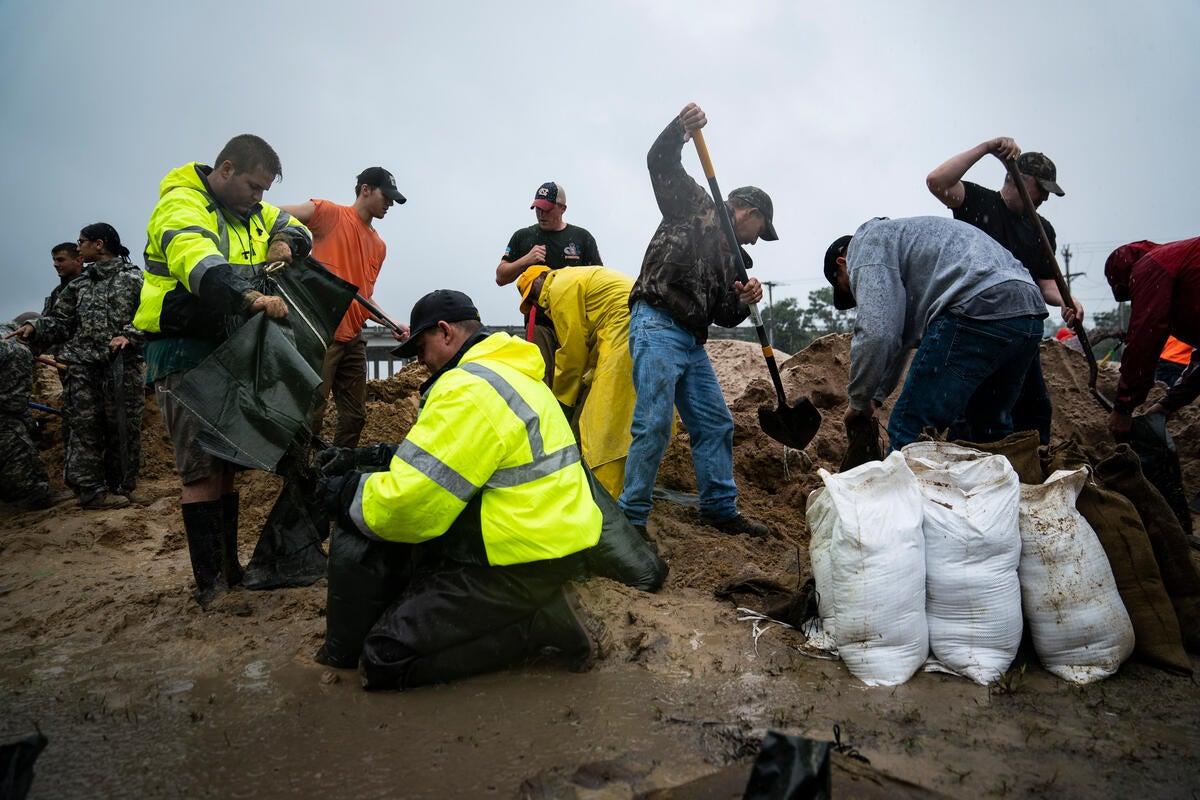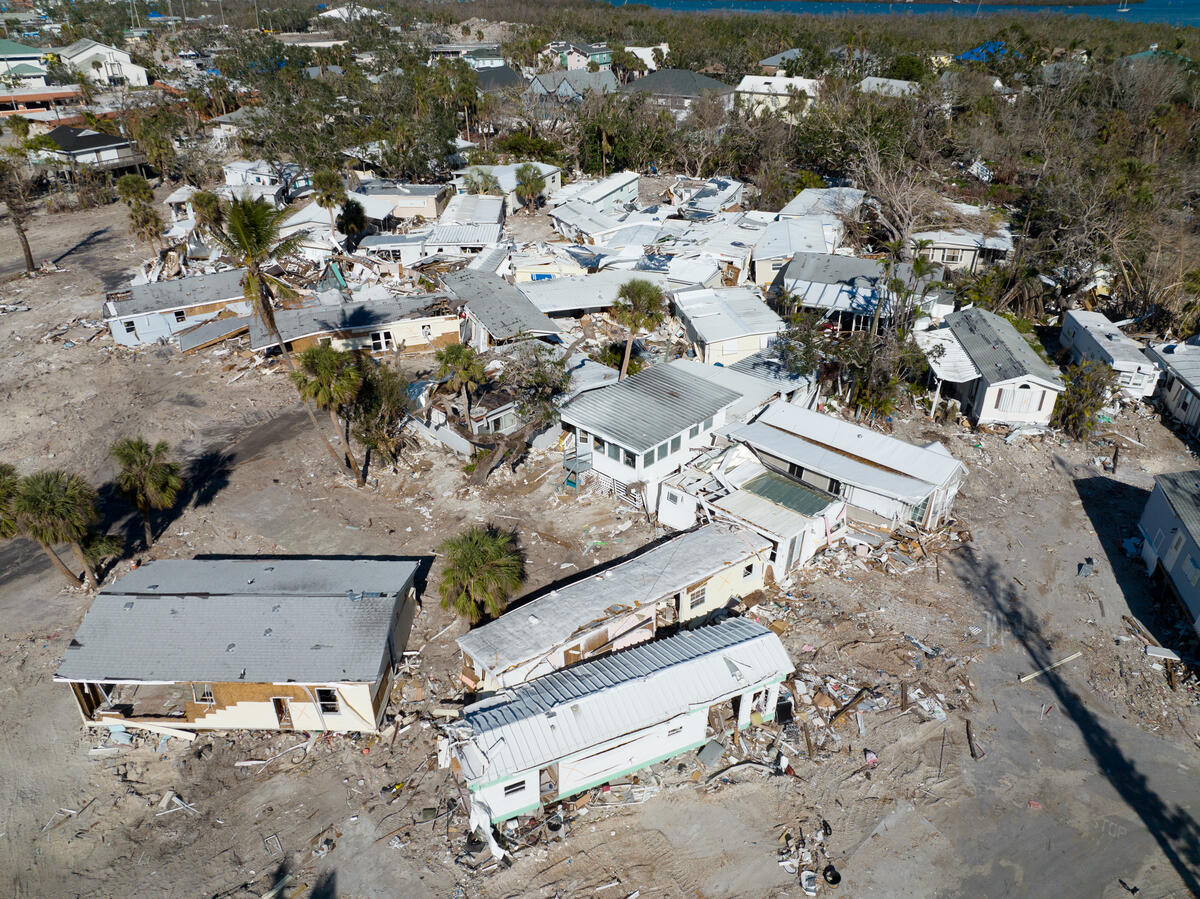On April 4, the Federal Emergency Management Agency (FEMA) was directed under the Trump administration to eliminate one of the largest disaster preparedness programs in the country. By defunding the Building Resilient Infrastructure and Communities (BRIC) program, the administration will be canceling more than $882 million in funding aimed at helping communities reduce their risks and minimize costs ahead of natural disasters. These programs help keep people safe and save taxpayer dollars when future storms hit. As we enter this year’s hurricane season, BRIC funding cuts, along with other actions targeted at dismantling disaster safety nets, leave vulnerable states and communities less prepared than ever.
Growing Returns
Major federal funding cuts leave communities less prepared for hurricane seasons
North Carolina’s coastal wetlands and marshlands are a critical lifeforce for hunters and anglers
This op-ed was originally published in The Coastland Times.
Last week as Hurricane Lee tracked northward through the Atlantic, North Carolina’s coastal areas saw coastal flooding and beach erosion from storm surge and powerful 17-foot waves. At Cape Hatteras, the storm’s erosion uncovered a buried fence from the 1800s. Elsewhere, roads and neighborhoods experienced flooding. Those effects were felt despite Lee being more than 300 miles off our coast. We were fortunate the monster storm didn’t come any closer to our shores. These tropical systems, along with Nor’easters and other more frequent storm events take a toll on residents, business owners, and our state’s natural resources, including important fish and wildlife habitat.
As we mark National Hunting and Fishing Day, it’s worth taking stock of how increasingly intense and more frequent severe weather events are impacting our marshlands, wetlands, and sounds, which in turn directly – and adversely – affects our coastal communities and our hunting, fishing and outdoor recreational history and traditions. Read More
Five years after Hurricane Florence, EDF looks back at efforts to build resilience in North Carolina
In 2018, Hurricane Florence made landfall near Wilmington, North Carolina, taking 42 lives and costing more than $16 billion in estimated damage. Now, five years later, many residents and communities are still reeling from the storm’s floodwaters. Blue tarps remain on unpatched roofs, businesses have not returned and communities have experienced disproportionate recoveries.
The immediate and residual impacts from Hurricanes Florence and Matthew, Tropical Storm Fred and other subsequent unnamed flooding events have had long-lasting impacts on communities. As a result, these events have encouraged state leaders to take action to better prepare for future storms.
Environmental Defense Fund thanks leaders, as well as businesses, conservation groups and community members, for working to build a more flood-resilient North Carolina. Let’s look at how far we’ve come in the last five years.

LUMBERTON, NC – SEPTEMBER 14 : 40 members of the National Guard and 100 volunteers fill sand bags and build a wall across train tracks where flood waters flowed into Lumberton in hurricanes past behind West Lumberton Baptist Church on Friday, Sept 14, 2018 in Lumberton, NC. North Carolina State Senator Danny Earl Britt, Jr. organized the action through facebook in defiance of CSX Transportation but with permission of the Governor to try and prevent major flooding in the area. (Photo by Jabin Botsford/The Washington Post via Getty Images)
4 strategies for policymakers to get more natural infrastructure in the ground, fast
Climate change is fueling increased flood risk across our nation’s coastal regions and floodplains.
States and local communities are turning to natural infrastructure as a key solution to build long-term flood resilience. Natural and nature-based features like wetlands, dunes and reefs offer multiple protective benefits — from absorbing stormwater, to minimizing the shock of storm surge to reducing flood severity.
However, identifying funding for natural infrastructure projects is not always straightforward.
4 ways North Carolina’s Legislature can build lasting flood resilience
As North Carolina continues to recover from a string of flooding and storm disasters, legislative leaders have recognized the opportunity for the state to not just recover from recent storms but to rebuild better before the next disaster.
This week, Environmental Defense Fund released a white paper [PDF] recommending four specific policy actions that would better protect residents and businesses from more severe flooding, create jobs and increase climate resilience.
These four policies will also help the state better compete for federal funding, build capacity within communities and equitably align solutions for those who are disproportionately impacted by disasters. Read More
What you need to know about new FEMA funding for community resilience
A new Federal Emergency Management Agency-run program, Building Resilient Infrastructure and Communities, will provide millions of dollars to cash-strapped local and state governments and federally recognized Indian tribes for projects that build resilience to protect people and property before the next disaster.
FEMA has $500 million available for BRIC projects, with $20 million set aside for federally recognized tribes. The agency will accept applications from September 30, 2020 to January 29, 2021 and requires a current FEMA-approved Hazard Mitigation Plan for eligibility.
Here are three lessons to consider as you develop your BRIC proposal. Read More
North Carolina’s Legislature moves toward greater flood protection and climate resilience
Update, July 1, 2020: North Carolina’s Senate and House unanimously passed HB 1087. We thank Rep. Bell, Rep. McGrady and Sen. Newton for their leadership in advancing this important piece of legislation. Gov. Cooper signed HB 1087 on July 1, 2020. EDF staff will be working with Division of Mitigation Services staff and stakeholders to develop the program. Read our statement in response here.
Earlier this month, North Carolina released its first Climate Risk Assessment and Resilience Plan to prepare for more intense rain events and flooding. In particular, the plan emphasizes natural infrastructure as a means to reduce flooding and provide other benefits.
On the heels of the plan’s release, North Carolina’s General Assembly is expected to pass a bill that contains a measure to create a faster, more efficient path for investing in projects that reduce flooding, protecting downstream communities while also empowering the private sector to employ more North Carolinians.
Once passed, HB 1087 will go to Gov. Roy Cooper for his signature. If signed, the bill would not only help North Carolina implement natural infrastructure projects with greater urgency, but it would also create the nation’s first market for natural infrastructure projects to address flooding.
North Carolina confronts climate change with forthcoming resilience plan
Update: North Carolina Governor Roy Cooper released the state’s first Climate Risk Assessment and Resilience Plan on June 2, 2020. See our statement in response here.
Earlier this month, Tropical Storm Arthur brushed by North Carolina’s Outer Banks two weeks before the official start of hurricane season and in the midst of the coronavirus pandemic. While damage was minimal, the storm was an urgent reminder of the state’s need to build climate resilience.
As North Carolina recovers from a slate of recent hurricanes, state officials are moving quickly to build resilience ahead of future storms. Gov. Cooper is expected to release the state’s first resilience plan in early June, providing a framework that will help the state move quickly toward a more resilient future. Read More
North Carolina must prepare for sea level rise now
North Carolina’s barrier islands (aka the Outer Banks) received the brunt of Hurricane Dorian’s impact to the U.S. mainland, but the damage could have been a lot worse had the storm not been weakened after ravaging the Bahamas as a Category 5 hurricane.
With the devastation of Hurricanes Florence, Michael and Matthew still in recent memory, North Carolinians did not need another reminder of the destructive power of hurricanes. However, Dorian highlighted the particular vulnerability of North Carolina’s barrier islands, and the need for us to develop solutions now for how this region confronts sea level rise and more frequent and intense storms. Read More
North Carolina keeps getting clobbered. Here are four strategies for weathering the next storm.
As my fellow North Carolinians prepared for the arrival of Hurricane Dorian last week, many were still reeling from the devastation that Hurricane Florence inflicted upon communities and businesses last year. And that’s to say nothing of the misery that Hurricane Matthew wrought upon residents two years before that – or the smaller flooding events that are now challenging folks with more regularity.
As we work toward recovery, we need to think about how we adjust to this new normal and build resilience in the face of increasingly intense storms and sea level rise.
As Gov. Roy Cooper said when testifying before the U.S. House Natural Resources Committee in February, “When storms are becoming more destructive, it’s not enough to pick up the pieces. We must take action to prevent this kind of devastation in the future.” Read More










